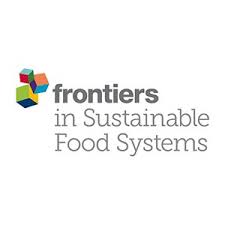Quantitative risk assessment of salmonellosis in Cambodian consumers through chicken and pork salad consumption
Abstract
Salmonella is a globally important foodborne bacterial pathogen that poses a high risk to human health. This study aimed to estimate the risk to Cambodian consumers from acquiring salmonellosis after consuming chicken and pork salad, using a quantitative microbial risk assessment (QMRA). Chicken and pork salads are typical Cambodian dishes containing raw vegetables and boiled chicken meat or pork. As previously described, chicken meat and pork samples (n = 204 of each) were collected from traditional markets in 25 Cambodian provinces to generate data on Salmonella contamination. Salad preparation and consumption practices were surveyed in 93 Cambodian households and this information was used to design an experiment to assess Salmonella cross-contamination from raw meat to ready-to-eat salad. In the part of the study reported here, data on consumption, Salmonella in salad, dose-response, and predicted salmonellosis were modeled using Monte Carlo simulations at 10,000 iterations. The prevalence of Salmonella in chicken meat and pork were set to 42.6 and 45.1%, respectively, with average most probable number (MPN) per gram of Salmonella in chicken meat was 10.6 and in pork 11.1 MPN/g, based on an earlier study. Half of the interviewed households cooked meat for the salad directly after purchase. The QMRA model showed that the modeled annual risk of salmonellosis from consuming chicken salad, pork salad and both chicken and pork salad were 11.1% probability of illness per person per year (90% CI 0.0–35.1), 4.0% (90% CI 0.0–21.3), and 14.5% (90% CI 0.0–33.5), respectively. The factors most influencing the estimate were cross-contamination while preparing the salad, followed by the prevalence of Salmonella in chicken meat and pork at the market. The wide confidence interval for the incidence was mainly due to the variability in reducing bacteria concentration by cooking and salad consumption. The predicted risk of salmonellosis due to chicken and pork salad consumption is high, and the study provides evidence supporting control measures of improving the safety of retailed chicken and pork obtained from markets to households and improving food preparation methods in the household.

